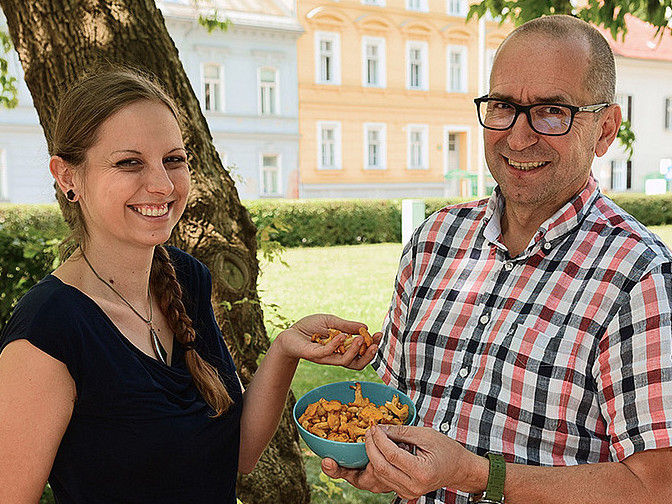High concentrations of trace elements in native fungi
Advertisement
The mushroom season is open. In the restaurants, chanterelle dishes have been on the menu for several weeks now. Chemists from the University of Graz have investigated and determined everything that is in porcini mushrooms, parasol & co: Mushrooms enrich trace elements from the soil generally strongly, whereby each type has its own "preferences". The minerals and heavy metals enter the body through consumption. Some of them are essential for the organism, others potentially harmful. The appetite should not be spoiled in any case. "Our edible mushrooms are harmless when enjoyed seasonally and in moderation," says Walter Gössler, head of the analytical chemistry for Health and the Environment working group and himself an enthusiastic mushroom seeker.

Walter Gössler and Simone Bräuer investigated what is in domestic mushrooms.
Graz/Pichler
As part of a project funded by the Austrian Science Fund FWF, Walter Gössler and Simone Bräuer from the Institute of Chemistry at the University of Graz, together with colleagues from the Czech Republic, analysed over a thousand samples of around 230 native fungal species. The researchers had their sights set on arsenic, the inorganic compounds of which lead to chronic poisoning when absorbed in high concentrations over a longer period of time.
As fungi strongly enrich all trace elements, many also have a high arsenic content. "Our analyses have shown that a number of species exceed the 0.2 milligram limit for inorganic arsenic per kilogram set by the EU for rice," reports Gössler. However, this is not a cause for concern as long as mushrooms are consumed in the usual quantities, according to the researchers. The chemist warns, "Only the crown mug, which is very poisonous raw, but is still eaten by some people after boiling and pouring away the cooking water, should be avoided, as it has an unusually high total arsenic concentration - of up to one percent of the dried fungus,".
In addition to arsenic, the researchers searched for other trace elements in their samples. They discovered that each type of fungus has its own typical trace element profile: "The porcini fungus stores a relatively large amount of selenium and mercury. There is slightly more cobalt in chanterelles than in most other species," reports Simone Bräuer. The third in the group of the most popular edible mushrooms in Austria proved to be quite unspectacular from a chemical point of view: "Parasol is the average for all elements," says Bräuer.
The concentrations also vary in the different parts of the fungus. The trace elements accumulate most strongly in the tubes under the cap. "In order to consume as few potentially harmful substances as possible, it is advisable to consume only the handle and cap," advises Gössler. Another possibility would be to eat only cultivated mushrooms. Since they are bred on substrates with little trace elements, they show a considerably lower enrichment.
Note: This article has been translated using a computer system without human intervention. LUMITOS offers these automatic translations to present a wider range of current news. Since this article has been translated with automatic translation, it is possible that it contains errors in vocabulary, syntax or grammar. The original article in German can be found here.






























































